
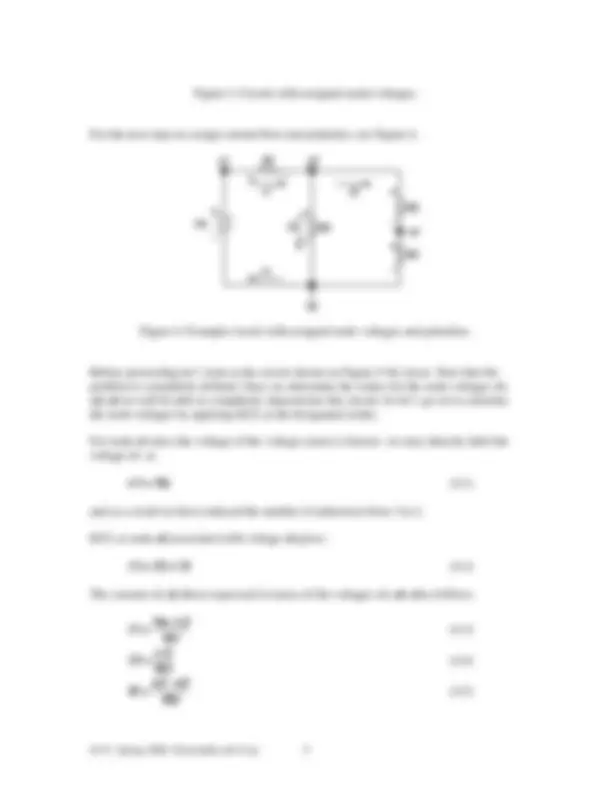
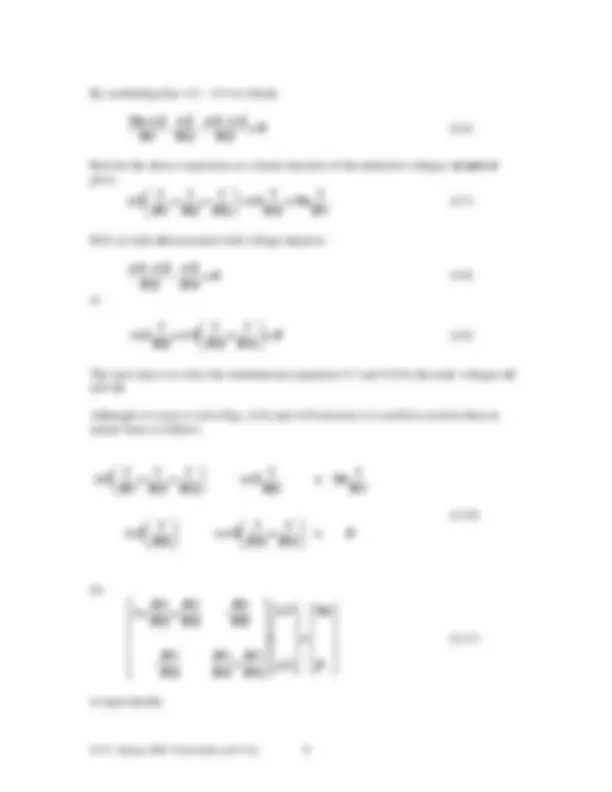
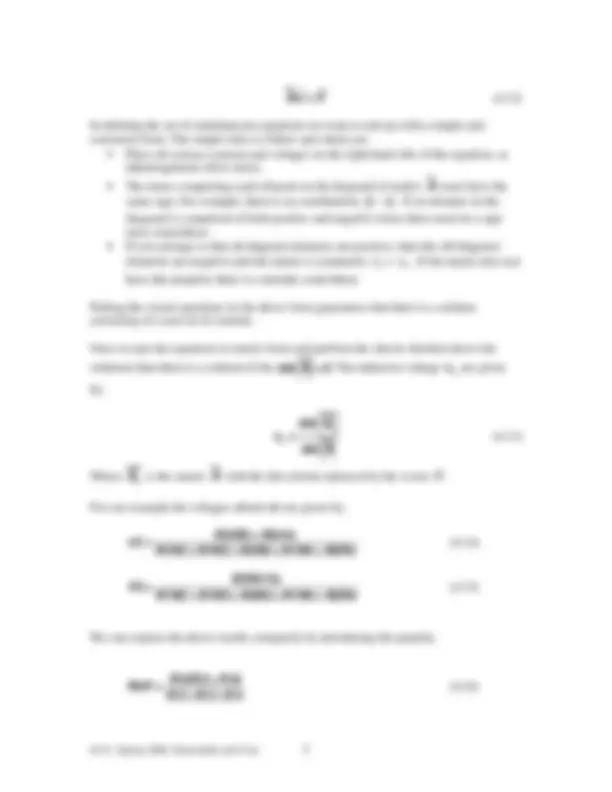
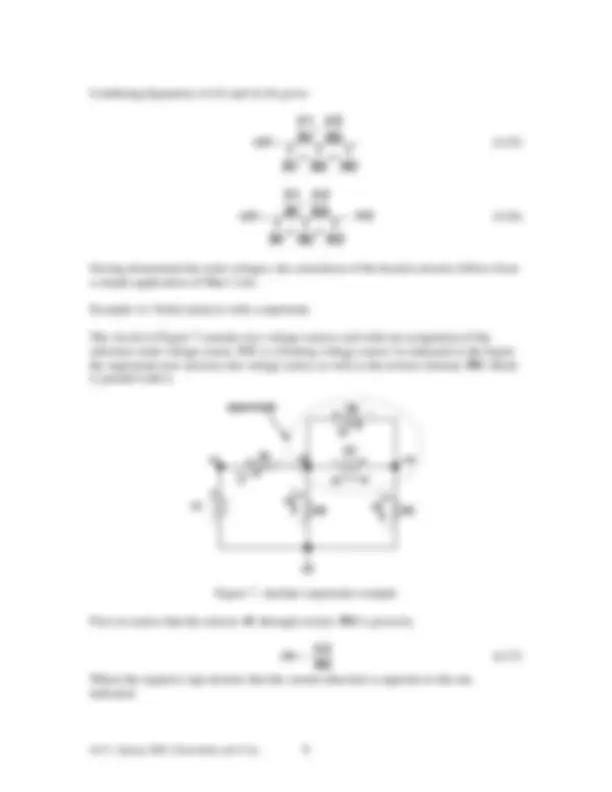
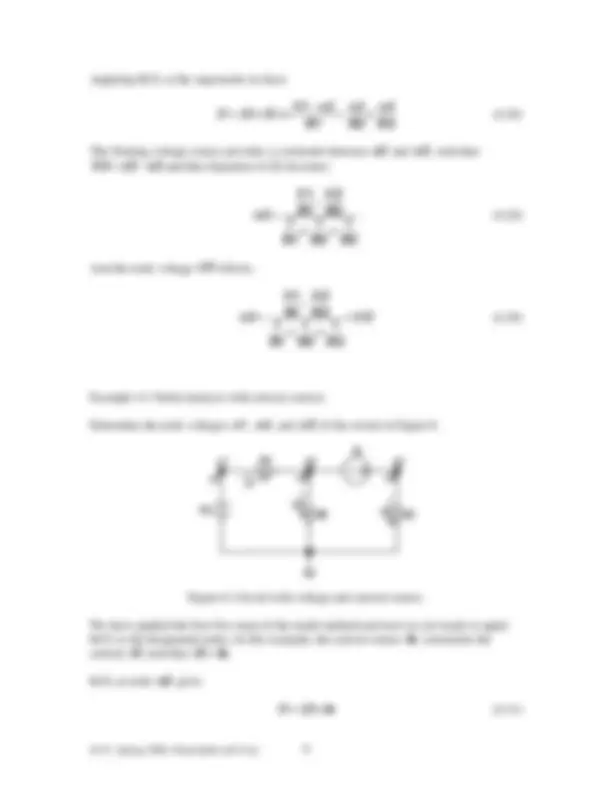
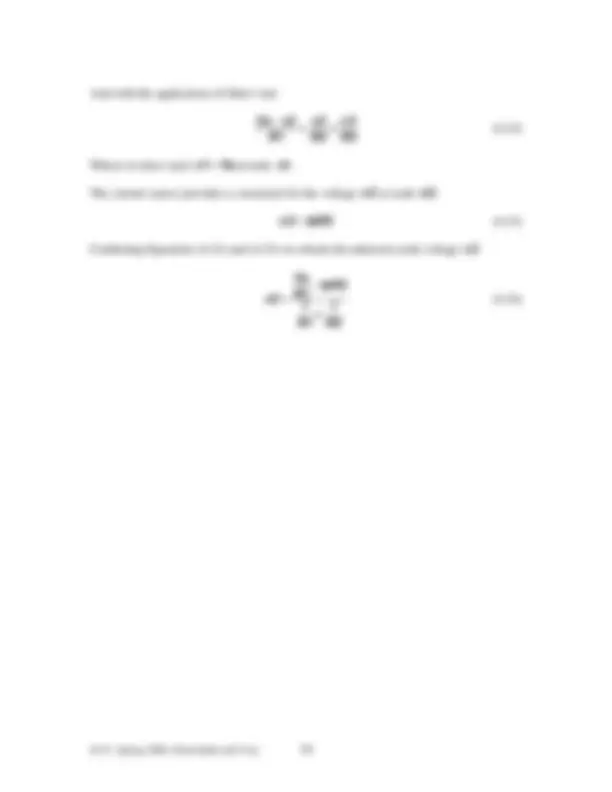
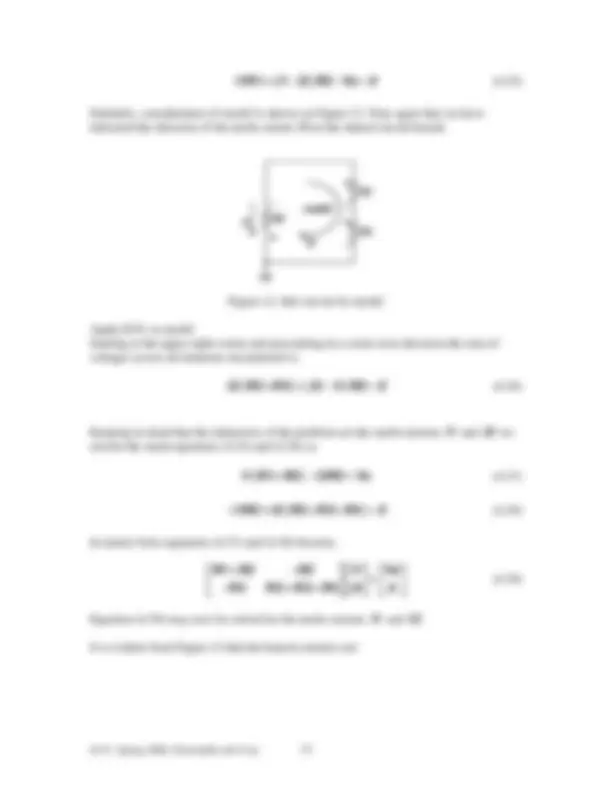
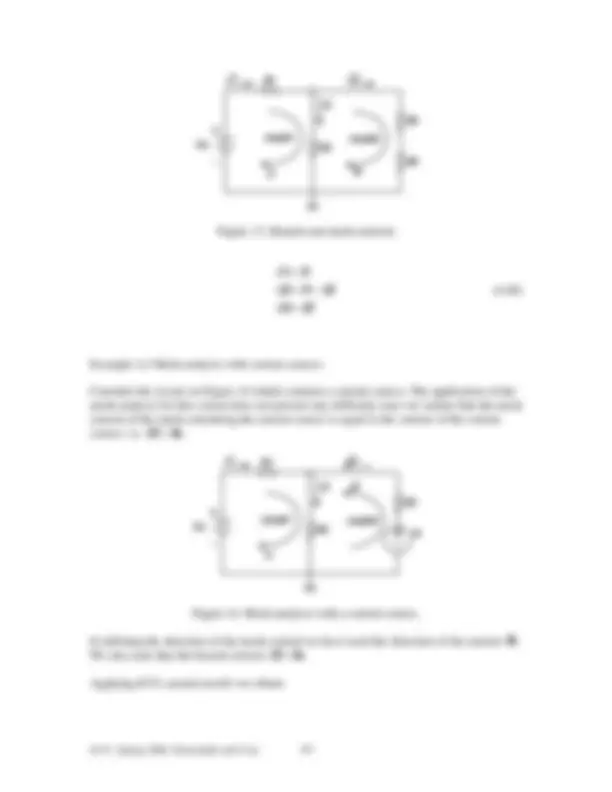
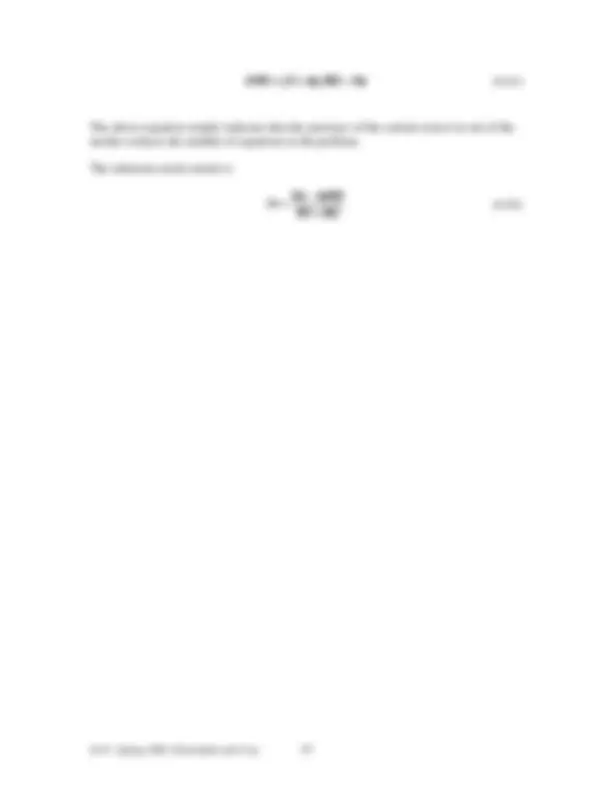
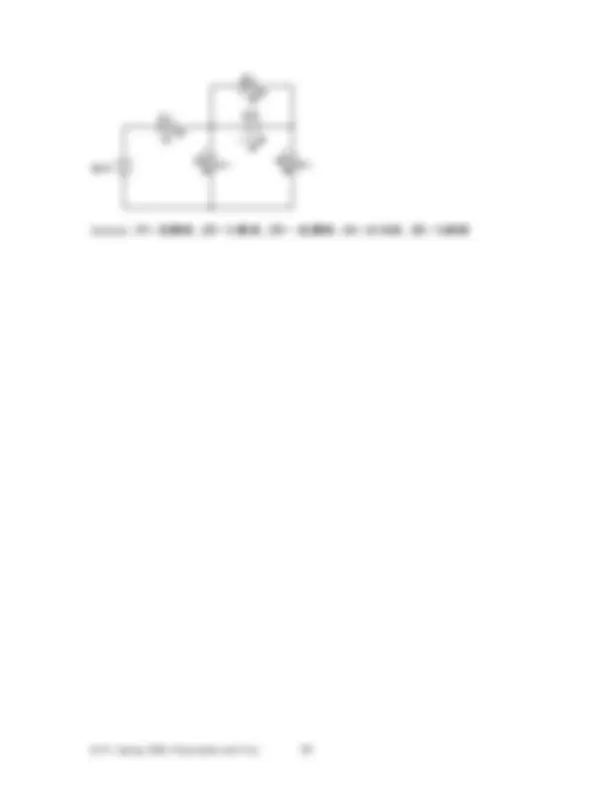
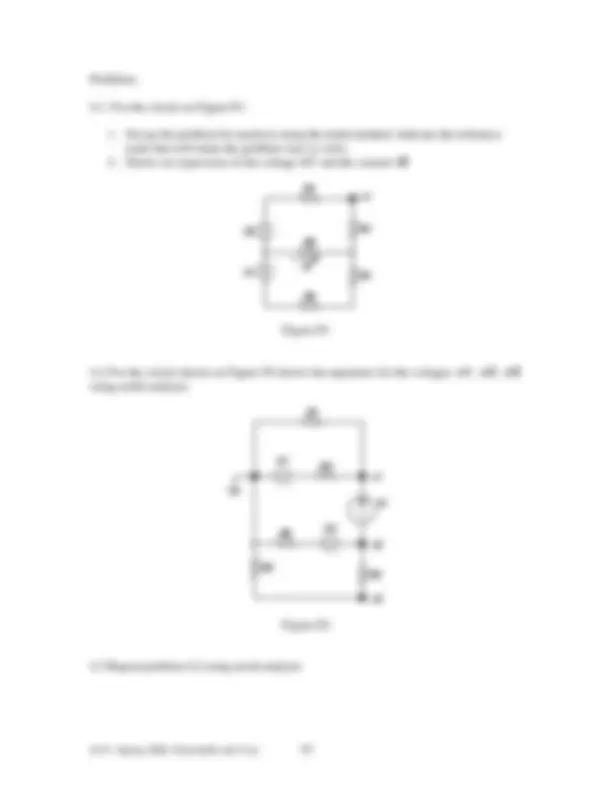
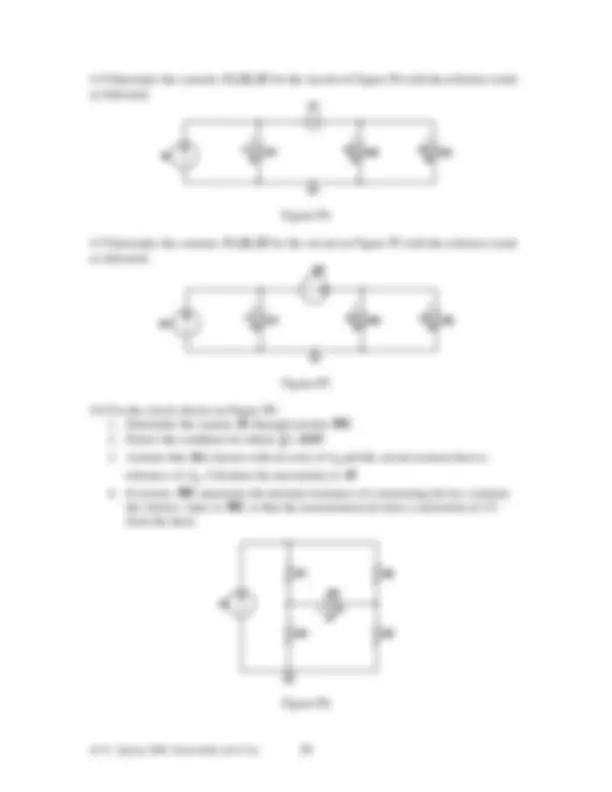


Study with the several resources on Docsity

Earn points by helping other students or get them with a premium plan


Prepare for your exams
Study with the several resources on Docsity

Earn points to download
Earn points by helping other students or get them with a premium plan
Community
Ask the community for help and clear up your study doubts
Discover the best universities in your country according to Docsity users
Free resources
Download our free guides on studying techniques, anxiety management strategies, and thesis advice from Docsity tutors
Guide in circuit Nodal analysis
Typology: Study Guides, Projects, Research
1 / 20

This page cannot be seen from the preview
Don't miss anything!













We have seen that using Kirchhoff’s laws and Ohm’s law we can analyze any circuit to determine the operating conditions (the currents and voltages). The challenge of formal circuit analysis is to derive the smallest set of simultaneous equations that completely define the operating characteristics of a circuit.
In this lecture we will develop two very powerful methods for analyzing any circuit: The node method and the mesh method. These methods are based on the systematic application of Kirchhoff’s laws. We will explain the steps required to obtain the solution by considering the circuit example shown on Figure 1.
R
R
R 3
R 4
Vs
Figure 1. A typical resistive circuit.
The Node Method.
A voltage is always defined as the potential difference between two points. When we talk about the voltage at a certain point of a circuit we imply that the measurement is performed between that point and some other point in the circuit. In most cases that other point is referred to as ground.
The node method or the node voltage method, is a very powerful approach for circuit analysis and it is based on the application of KCL, KVL and Ohm’s law. The procedure for analyzing a circuit with the node method is based on the following steps.
We will use the circuit of Figure 1 for a step by step demonstration of the node method.
Figure 2 shows the implementation of steps 1 and 2. We have labeled all elements and identified all relevant nodes in the circuit. R
R
R
R
Vs
n1 n
n 3
n Figure 2. Circuit with labeled nodes.
The third step is to select one of the identified nodes as the reference node. We have four different choices for the assignment. In principle any of these nodes may be selected as the reference node. However, some nodes are more useful than others. Useful nodes are the ones which make the problem easier to understand and solve. There are a few general guidelines that we need to remember as we make the selection of the reference node.
For our example circuit the selection of node n4 as the reference node is the best choice. (equivalently we could have selected node n1 as our reference node.) The next step is to label the voltages at the selected nodes. Figure 3 shows the circuit with the labeled nodal voltages. The reference node is assigned voltage 0 Volts indicated by the ground symbol. The remaining node voltages are labeled v1, v2, v3.
R
R
R
R
Vs
v1 v
v 3
By combining Eqs. 4.2 – 4.5 we obtain
Vs- v 2 v 2 v 2 - v 3
Rewrite the above expression as a linear function of the unknown voltages v2 and v gives. 1 1 1 1 1 v 2 + + - v 3 = Vs R1 R 2 R 3 R 3 R
KCL at node n3 associated with voltage v3 gives:
v 2 - v 3 v 3
or
1 1 1
The next step is to solve the simultaneous equations 4.7 and 4.9 for the node voltages v and v3.
Although it is easy to solve Eqs. (4.8) and (4.9) directly it is useful to rewrite them in matrix form as follows.
v 2 + + - v 3 = Vs R1 R 2 R 3 R 3 R
Or
⎡ ⎤ (^) ⎡ ⎤ ⎡ ⎤ ⎢ ⎥ (^) ⎢ ⎥ ⎢ ⎥ ⎢ ⎥ (^) ⎢ ⎥ ⎢ ⎥ ⎢ ⎥ (^) ⎢ ⎥ ⎢ ⎥ ⎢ ⎥ (^) ⎢ ⎥ ⎢ ⎥ ⎢ ⎥ (^) ⎣ ⎦ ⎣ ⎦ ⎣ ⎦
i
R1 R1 R1 (^) v V 1 + + - R 2 R 3 R 3 = R1 R1 R
s
(4.11)
or equivalently.
A v = Vi (4.12)
In defining the set of simultaneous equations we want to end up with a simple and consistent form. The simple rules to follow and check are:
Putting the circuit equations in the above form guarantees that there is a solution consisting of a real set of currents.
Once we put the equations in matrix form and perform the checks detailed above the
solutions then there is a solution if the (^) det A = 0 The unknown voltage are given
by:
v k
k k
det A v = det A
Where Ak is the matrix A with the kth column replaced by the vector V.
For our example the voltages v2 and v3 are given by:
R2(R3 + R4)Vs v2 = R1R2 + R1R3 + R2R3 + R1R4 + R2R
R2R4 Vs V3 = R1R2 + R1R3 + R2R3 + R1R4 + R2R
We can express the above results compactly by introducing the quantity
Reff = R 2 + R 3 + R 4
So, the node voltage method provides an algorithm for calculating the voltages at the nodes of a circuit. Provided one can specify the connectivity of elements between nodes, then one can write down a set of simultaneous equations for the voltages at the nodes. Once these voltages have been solved for, then the currents are calculated via Ohm’s law.
Nodal analysis with floating voltage sources. The Supernode.
If a voltage source is not connected to the reference node it is called a floating voltage source and special care must be taken when performing the analysis of the circuit. In the circuit of Figure 6 the voltage source V 2 is not connected to the reference node and thus it is a floating voltage source.
R
V1 R2 R 3
supernode
n1 n2^ n i i2 (^) i
v2 (^) v
Figure 6. Circuit with a supernode.
The part of the circuit enclosed by the dotted ellipse is called a supernode. Kirchhoff’s current law may be applied to a supernode in the same way that it is applied to any other regular node. This is not surprising considering that KCL describes charge conservation which holds in the case of the supernode as it does in the case of a regular node.
In our example application of KCL at the supernode gives
i1 = i2 + i3 (4.22)
In term of the node voltages Equation (4.22) becomes:
V 1 v 2 v 2 v 3 R1 R2 R
The relationship between node voltages v1 and v 2 is the constraint that is needed in order to completely define the problem. The constraint is provided by the voltage source V 2.
V 2 = v3 − v2 (4.24)
Combining Equations (4.23) and (4.24) gives
V1 V 2 v2 R1^ R 1 1 1 R1 R2 R
v 3 R1^ R3 V 2 1 1 1 R1 R2 R
Having determined the node voltages, the calculation of the branch currents follows from a simple application of Ohm’s law.
Example 4.1 Nodal analysis with a supernode
The circuit in Figure 7 contains two voltage sources and with our assignment of the reference node voltage source V 2 is a floating voltage source As indicated in the figure the supernode now encloses the voltage source as well as the resistor element R 4 which is parallel with it.
R
V1 R2 R
supernode
v i i2 (^) i
v2 (^) v
R
i
i
Figure 7. Another supernode example
First we notice that the current i 4 through resistor R4 is given by
V 2 i 4 R
Where the negative sign denotes that the current direction is opposite to the one indicated.
And with the application of Ohm’s law
Vs v 2 v 2 v 3 R1 R2 R
Where we have used v1 = Vsat node n1.
The current source provides a constraint for the voltage v3 at node n3.
v3 = IsR3 (4.33)
Combining Equations (4.32) and (4.33) we obtain the unknown node voltage v 2
Vs IsR v2 R 1 1 R1 R
The Mesh Method
The mesh method uses the mesh currents as the circuit variables. The procedure for obtaining the solution is similar to that followed in the Node method and the various steps are given below.
A mesh is defined as a loop which does not contain any other loops. Our circuit example has three loops but only two meshes as shown on Figure 9. Note that we have assigned a ground potential to a certain part of the circuit. Since the definition of ground potential is fundamental in understanding circuits this is a good practice and thus will continue to designate a reference (ground) potential as we continue to design and analyze circuits regardless of the method used in the analysis.
R
R
R
R
Vs
mesh1 mesh
loop
Figure 9. Identification of the meshes
The meshes of interest are mesh1 and mesh2.
For the next step we will assign mesh currents, define current direction and voltage polarities. The direction of the mesh currents I1 and is defined in the clockwise direction as shown on Figure 10. This definition for the current direction is arbitrary but it helps if we maintain consistence in the way we define these current directions. Note that in certain parts of the mesh the branch current may be the same as the current in the mesh. The branch of the circuit containing resistor is shared by the two meshes and thus the branch current (the current flowing through ) is the difference of the two mesh currents. (Note that in order to distinguish between the mesh currents and the branch
Similarly, consideration of mesh2 is shown on Figure 12. Note again that we have indicated the direction of the mesh current I1on the shared circuit branch.
R
R 3
R 4 I
mesh
+
I
Figure 12. Sub-circuit for mesh
Apply KVL to mesh Starting at the upper right corner and proceeding in a clock-wise direction the sum of voltages across all elements encountered is:
Keeping in mind that the unknowns of the problem are the mesh currents and I2 we rewrite the mesh equations (4.35) and (4.36) as
In matrix form equations (4.37) and (4.38) become,
R1 R2 R2 I1 Vs R2 R2 R3 R4 I2 0
Equation (4.39) may now be solved for the mesh currents I1 and I2.
It is evident from Figure 13 that the branch currents are:
R
R
R 3
R 4
Vs
I1 I
mesh1 (^) mesh
i
i
i
Figure 13. Branch and mesh currents
i1 I i2 I1 I i3 I
Example 4.3 Mesh analysis with current sources
Consider the circuit on Figure 14 which contains a current source. The application of the mesh analysis for this circuit does not present any difficulty once we realize that the mesh current of the mesh containing the current source is equal to the current of the current source: i.e. I2 =Is.
R
R
R
Vs
I
I
mesh1 (^) mesh
i
i
i
Is
Figure 14. Mesh analysis with a current source.
In defining the direction of the mesh current we have used the direction of the current. We also note that the branch current
Is i3 = Is.
Applying KVL around mesh1 we obtain
Practice problems with answers.
Determine the currents in the following circuits with reference to the indicated direction. 6 Ω
4 Ω
2 Ω
12 V (^) 6 V
i
i
i
Answer: i1 =2.180A , i2 =0.270A ,i3 =2.450A
6 Ω
4 Ω
2 Ω
12 V (^) 6 V
i
i
i
2 Ω Answer: i1 =1.877 A , i2 = −0.187 A ,i3 =1.690A
6 Ω
10 V^4 Ω
i
i
10 V
2 Ω
i
Answer: i1 =0.455 A , i2 = −1.820A ,i3 = −1.36 A
6 Ω
10 V^4 Ω
i
i
10 V
2 Ω
i
Answer: i1^ =2.270A^ , i2^ =0.909A^ ,i3^ =3.180 A
6 Ω
4 Ω
2 Ω
12 V
i
i i
6 V
2 Ω 2 V
i i
Answer: i1 =1.180 A , i2 = −1.240A ,i3 = −0.058A i 4 = −0.529A , i5 =0.471A
6 Ω
4 Ω
2 Ω
12 V
i
3 Ω
2 Ω
i
v1 v
Answer: i1 =3.690A , i2 = −0.429A ,v1 =5.83V , v2 =6.69V
2 Ω
15 V
1 A
i i i
v2 v
5 Ω 4 Ω
3 Ω i
Answer: i1 = 3.31A,i2 = 1.68A,i3 = 1.63A,i 4 = 0.627 A,v2 = 8.39V ,v 3 =6.51V
Problems:
4.1. For the circuit on Figure P1:
R
R 2
R 3
V
v 1
V1^ i
R
R
Figure P
4.2 For the circuit shown on Figure P2 derive the equations for the voltages v1 , v 2 , v using nodal analysis.
R
R R
V
Is
V1 (^) R
R
v
v
v
Figure P
4.3 Repeat problem 4.2 using mesh analysis
4.4 Determine the currents i for the circuit on Figure P4 with the reference node as indicated.
1,i2,i
Is^ R1^ R2^ R^3
V
i1 i2 i
Figure P
4.5 Determine the currents i for the circuit on Figure P5 with the reference node as indicated.
1,i2,i
Is1 i1^ R1^ i2^ R2^ i3 R^3
Is
Figure P
4.6 For the circuit shown on Figure P6:
R1 R 2
R 3
i
Is
R
R
Figure P